By Brother Phap Linh
Every year I am asked to write something for the magazine Lá Thư Làng Mai, and every year I feel confused. What am I supposed to write? Who am I writing for? Who is the audience? These are the questions that come up right away—and this is what they told me this year: “Just write about Wake Up.” But what right do I have to write about Wake Up? Brothers and sisters tell me they want to know what Wake Up is—and I say, “Yes, I would like to know too—I wish someone would tell me!”
But this morning when I woke up, I realised that even if I don’t know exactly what Wake Up is, at least I have a couple of theories. I am happy to share them with all my brothers and sisters around the world, in the spirit of scientific investigation and in the hope that others may thereby be inspired to share their insights and ideas. In fact, as you will soon see, one of my theories is completely wrong, but that is how science advances, and at the very least, you may find it funny!
One thing at least is clear, and that is that Wake Up did not start in the Summer Retreat of 2008. Our elder sisters and brothers, like Sister Mai Nghiêm and Sister Tôn Nghiêm in Plum Village as well as Sister Đẳng Nghiêm, Sister Châu Nghiêm, Sister Hành Nghiêm, Brother Phap Hải, Brother Phap Dung, Brother Phap Lai, Brother Phap Lưu, Brother Phap Trạch and others in Deer Park, had been organising youth retreats and college retreats for several years already and these were growing and becoming very popular with many young western people. Of course there’s also the fact that in Vietnam and other Asian countries, almost any retreat was like a youth retreat, because Thầy is young, and his teaching has always attracted young people.
Thầy has always been building community, and building communities with a special flavour of creativity, of youth, of freedom…
So when Thầy asked Sister Hiến Nghiêm and me to stand up in the Summer Retreat of 2008 to “announce” the birth of the Wake Up movement, it was actually just a trick (though we may not have realised it at the time). It was a trick because Wake Up had already been there for a long time, and so what need did it have to be born? And with hindsight, I wonder if many of our elder brothers and sisters could see that and were smiling to themselves as we made the “announcement.”
Thầy and the Sangha have always been “doing” Wake Up and when I look at what Thầy has done in his life, it helps me to understand what Wake Up might actually be. Thầy has always been building community, and building communities with a special flavour of creativity, of youth, of freedom, and most importantly of the magic ingredient, brotherhood and sisterhood, or Sanghahood, as Brother Mãn Tuệ would say.
Looking back, I noticed one day that Thầy and Sư Cô Chân Không created, or rather, manifested, the School of Youth and Social Services (SYSS), the 14 Mindfulness Trainings, and the Vạn Hạnh University all around the same time. The three needed to go along together—wisdom hand in hand with action. Seeing this led me to ask myself if it was just by chance that Thầy asked us to launch a movement for young people around the same time that the EIAB and the new 5 Mindfulness Trainings were manifesting. It certainly is the case that the SYSS has always been alive in Wake Up—the vision and energy of the SYSS has always been, for many of us, the fire in the heart of Wake Up.
So in a sense we can see that Wake Up is just a transformation body of the SYSS, which itself was the manifestation of the deep aspiration of Thầy and so many other young monks and nuns and laypeople in Vietnam. We can say that Wake Up is an aspiration, rather than an organisation, and at least for me, being involved in Wake Up has been a way for me to discover, to get in touch with, to uncover my aspiration—to un-bury it, to dig it out from under the layers of suffering and confusion that had already accumulated in my life, and from before.
I think it has always been the wish of those of us involved in Wake Up that it should be a refuge of brotherhood and sisterhood, that it should become a seedbed for action, just as the SYSS always was. Because young people everywhere want to change society, because they see the violence, the injustice, the misunderstanding and the suffering caused by our greed and our mistaken urges to consume.
… being involved in Wake Up has been a way for me to discover, to get in touch with, to uncover my aspiration
When I first came to Plum Village, I was a broken and cynical 19-year-old, full of depression, confusion and with a completely untrained mind. I had no way to get in touch with, see, or understand my aspiration, let alone act on it. Perhaps, like me, many of the young people who come in touch with the practice also need to be able to heal first, to rebuild their trust in the human family and in themselves, and in the goodness, the truth and the beauty inside and around them, before they can engage.
So perhaps Wake Up is a space for young people to reconnect, to rebuild, and to become part of a growing community, in order for them to then discover that they may have had for a long time a deep and powerful desire to build such a community. Once they have experienced some healing themselves, they may get in touch with a deep wish to offer that space for others, who like themselves before, are drowning in a flood of despair, a desolation of distraction, and an overload of input. In that sense, Wake Up can be understood as nothing more or less than the continuation of the Buddha’s own aspiration to Wake Up, and to help others Wake Up.
Another thing is clear, which is that we cannot do it alone—this the Buddha and Thầy have been teaching us for a long time already—we need to find good spiritual friends and to support each other and grow up together. As monastics we are lucky to have started on the path of healing and transformation, and to be supported by our brothers and sisters. With that support behind us, it is natural and joyful for us to offer our hearts to other young people at Days of Mindfulness and retreats. And what is stopping us from helping the young people who come to our retreats to set up Sanghas where they are?
Sometimes all they need is a word or two of encouragement. Just to know that it is possible, just to hear that others have succeeded, is often enough for them to get started. And if we can give them one or two ideas, for example to organise a mindful walk in the park with friends, or a silent vegetarian meal, then right away they feel that it’s something possible, something they can actually do.
I remember the first time I went to Cambridge to be interviewed for a place at the University. I was just 16 years old, and it was one of the happiest days of my life. I was so excited to be in a place where, at last, I would get to meet all these wonderful, inspiring, creative, curious and open-minded people—kindred spirits who would want, like me, to discover new things, to understand life, the universe and everything, and to contribute to building a better world. I was so happy and so full of energy just because of the idea that I would get to connect with all these wonderful people.
Wake Up is a space for young people to reconnect, to rebuild, and to become part of a growing community.
Two years later, and just six months after the death of my mother, I became a student at the University and gradually began to experience the crushing and suffocation of my dream. Instead of all these wonderful inspired and inspiring people, I found mostly young people who had learned to push themselves, and who had been pushed by their parents and teachers, to do nothing but compete to be the best, the most intelligent, the most successful—to be number one. They were all running after that, and perhaps without knowing it, so was I.
But my aspiration to find and to gather together like-minded people was strong, and I set about doing just that, whilst completely neglecting my studies, to my shame. I was lucky to actually find a handful of wonderful people, people with integrity, and with dreams like mine, and even better and clearer than mine.
One of those people was Sr Hiến Nghiêm. Together we began to build a group of friends, but our vision was incomplete—we thought it would be enough to bring together all these wonderful people under one roof and just see what would happen. What we did not yet know is that we would need a practice, that we would need training—that good intentions, dreams and the energy of youth would not be enough. We needed virtue, we needed a path, and we needed to find our teacher.
Fortunately it was only one more year before I found Thầy and Plum Village, and my life began to change for the better, even if at first I thought I was some kind of Zen Master and tried to teach all my friends, including Sr Hiến Nghiêm, and solve all their problems with my newly acquired “wisdom.” Of course, I just created a lot more confusion and suffering for myself and others. But slowly, the energy of Plum Village worked on me and I began to understand a little bit, and perhaps even to help a little bit.
Hiến Nghiêm overcame her suspicion of the strange place in France that had made her boyfriend a vegetarian and accepted to go to a retreat in New Hamlet. After that it was clear—the practice would be at the centre of our lives. Year by year our aspiration grew, and eventually we saw that lay life was too narrow for us. It seemed like just about the craziest thing we could do would be to join the monastic community—so we did. For me, I also saw that the extent and depth of my suffering and habit energies was such that any attempt to build a community would fail, unless I was trained.
I also saw that the extent and depth of my suffering and habit energies was such that any attempt to build a community would fail, unless I was trained.
The other day I discovered something which I thought was totally cool and wonderful, but which turned out to be completely and utterly wrong. I share it here anyway because it’s funny and it may help you to understand me better. I came across the story of Bá Nha and Tử Kì, which Thầy has told many times. Bá Nha is a talented musician, but he feels that no-one can truly understand his music, until one day he meets Tử Kì. Tử Kì understands perfectly the heart and mind of the musician, and they become soul-friends. After Tử Kì passes away, Bá Nha breaks his harp and cuts the strings, never to play again, because he feels that there is no one else in the world worthy of his playing.
In the story, the writer then explains that it is not like this only for musicians, but that it is the same for all talented people (“hiền giả,” – talented ones). He says that the reason they lose hope and give up is not that there are no other such people in the world, but rather that it is difficult for them to meet and find each other. I noticed that the character for “a good person,” or “a person of quality,” is 䁂 (hiền), and the character for “to join,” “to connect,” “to be in touch,” or “to meet,” is 接 (tiếp), and without asking anyone or checking, I jumped to the conclusion that these must be the two characters Thầy chose for the community of the 14 Mindfulness Trainings, the Order of Interbeing, because I am hơi ngu một tí (Note to those who are reading this: it’s a humorous Vietnamese expression of saying I am a little stupid), and I never paid attention to the correct pronunciation.
As everyone already knows, the correct pronunciation, is Tiếp Hiện, where hiện (現), means “realizing,” and “making it here and now,” and not Tiếp Hiền, (接賢), which probably doesn’t mean anything at all. Worse than that, not only did I get the wrong character for hiện, but I misunderstood the way Thầy used the character tiếp (接). It seems that Thầy used tiếp in two ways. The first meaning is “to be in touch with,” not in the sense of being in touch with people, but in the sense of being in touch with reality.
And the second meaning is “to continue,”—as in to continue the career of enlightenment, to be the continuation of Buddhas and Bodhisattvas. Whoops. So my theory is truly and completely shattered! But until Thay Phap Khôi pointed out my mistake, I was completely satisfied with my “discovery,” and I managed to turn it into quite an imposing edifice.
Well, now I know that it’s completely frivolous, and I need to be a bit more humble and study a little bit more thoroughly, but perhaps I can still salvage something from the rubble of my wrong perception. Although the story obviously has nothing to do with the Tiếp Hiện, perhaps it does have something to do with Wake Up, even if only for me. Because this at least is still true: that it has always been my dream to find, to meet, to connect with, and to bring together good, kind and wise people. And that is why the story inspired me so much. Because if we don’t find each other, if we don’t connect and come together, we will lose our faith and give in to despair—just like what very nearly happened to me in Cambridge.
The flame of Wake Up was always there, and Thầy was able to recognize the moment when conditions were sufficient for it to manifest again.
And I believe that for many of us, this is the fire in our hearts. This is the dream that keeps us going—the vow I make and promise to keep always—to keep this fire of brotherhood and sisterhood alive. Because building Wake Up is just like making a fire—and anyone who has ever seen Thầy start a fire knows that he is very good at it. And we all know, because Thầy has taught us so well, that the flame is not born, does not come from nothing, but just manifests when conditions are sufficient.
So it seems that the flame of Wake Up was always there, and Thầy was able to recognize the moment when conditions were sufficient for it to manifest again. And now that Wake Up is growing, the fire in our hearts can be transmitted. It was transmitted to us by Thầy and by our ancestors, and we are able to some extent to transmit it again to others—to touch off the spark that lies sleeping in the hearts of our brothers and sisters and friends around the world.
And we know that the fire that then comes to life and starts to grow, the communities we see springing up all around the world, the insight, the creativity and joy of the more than 60 Wake Up Sanghas around the world, is not the same but also not different from the flame and the fire that was and is still in the hearts of all those who joined the SYSS in the sixties. Wake Up is their continuation, a way for young people to find each other, to train together, and to engage and to serve together. The stories of the SYSS continue to inspire and motivate the young people in the Wake Up Movement, and many of them are now training to receive the 14 MT’s and become members of the OI, the Tiếp Hiện.
That’s why we all feel so happy when we hear that Sister Hành Nghiêm, Sister Mai Nghiêm, Sister Sinh Nghiêm, Brother Phap Chứng, and Brother Phap Giao are organising flashmob sitting and walking meditations in downtown Hong Kong, or that they have a Wake Up day every month at the temple, or that the Wake Up Hong Kong Sangha meets twice a week in the city; or when we hear about the many Wake Up retreats in the mountains of Thailand, and Wake Up DOM’s in Bangkok, organised by Sister Trừng Nghiêm, Sister Đăng Nghiêm, Trắng Tùng Hạt, Trắng Huyền Thoại, Brother Phap Lâm, Brother Phap Biểu, Brother Phap Thệ, Brother Trời Độ Lượng, and all the brothers and sisters in Pak Chong; or when we hear the energy and joy in the voices of Sister Tại Nghiêm, Sister Sáng Nghiem and Brother Trời Phạm Hạnh telling stories about the Wake Up retreat that took place in Plum Village at the end of the Summer; or when we hear from Brother Trời Ngộ Không about the Wake Up retreat in the desert in Israel; or when we hear the CD recorded by Sister Haì Nghiêm and by the young people during the “Music We Are” Wake Up retreat at the EIAB; or when we hear Brother Phap Lý and Sister Sứ Nghiêm share about the joy and fun of the young French and Vietnamese people coming together during the Wake Up Retreat at the Maison de l’Inspir.
Thầy is truly a fire-starter, a Sangha builder—all he had to do was suggest that we should do a Wake Up tour of Europe, and now tours are popping up all over the place!
When we hear about a Wake Up retreat being organized somewhere, when we see the cool posters before the retreat and the funny pictures afterwards, when we see the fire of Bodhicitta burning in the hearts of our brothers and sisters and friends around the world, we know that the spark has jumped from heart to heart and the dream is already being realised.
Now those same sparks are jumping from Wake Up Sangha to Wake Up Sangha—we have an online forum where all the core Wake Up Sangha builders, lay and monastic, can share their dreams and aspirations. It’s so fun to see Wake Up New York ask a question, and Wake Up London, Barcelona, Bangkok, Seoul and Tokyo jump in with their experiences and suggestions. Thầy is truly a fire-starter, a Sangha builder—all he had to do was suggest that we should do a Wake Up tour of Europe, and now tours are popping up all over the place!
After seeing what Brother Phap Tử had been able to do by just organising Days of Mindfulness and weekend retreats in a few Indonesian universities, we realised that we could do the same in the UK. “After all,” said Thầy, “Indonesia is not a Buddhist country!” Now we’ve had two Wake Up Tours in the UK. Two or three in Ireland, one in Spain, two in Italy, and one mega-tour on the East coast of the US, thanks to the inspiration and energy of Brother Phap Lưu and Sister Thệ Nghiêm.
The year after, Brother Phap Hộ, Brother Chỉnh Quang, Sister Bội Nghiêm, Sister Phú Nghiêm and others in Deer Park organised two Wake Up Tours in California and North West America. Brother Phap Siêu and Brother Trời Bảo Tích managed to fit some Wake Up events into last year’s mini-tour of India and Bhutan, and as a result, there is now a Wake Up Sangha in Bhutan, and that Sangha has even been able to organise a Wake Up summer camp there. In fact, all the Wake Up Tours have seeded Wake Up Sanghas, many of which are now thriving and hosting retreats and Days of Mindfulness and retreats of their own.
This year, Brother Phap Vũ, Brother Phap Mãn and the sisters at Blue Cliff Monastery are planning a Mid-West Wake Up Tour. Brother PHap Dung, Brother Phap Nguyện, Brother Phap Khải, Sister Đẳng Nghiêm, Sister Bạch Nghiêm and Sister Bội Nghiêm are preparing for a month long Vietnamese Roots US Wake Up Tour in Spring. Brother Phap Hải is talking about a Wake Up tour in Australia. Brother Phap Lưu is planning a tour of six countries in South America in the fall. Sister Sáng Nghiêm and Brother Phạm Hạnh are waiting for a few more conditions to manifest for a tour in Holland and Belgium, and we hear rumours of a tour in Asia—is it true Brother Phap Khả? Is it true Brother Kỳ Ngộ? Sister Tuyết Nghiêm, Sister Nghĩa Nghiêm? That would be so much fun—please invite us to come and join.
It seems better to allow Wake Up to grow and to inter-be into what it inter-is now through the collective dreams, aspirations and wholesome actions of so many young people and brothers and sisters around the world.
So Wake Up is also a way to bring young Westerners and non-Westerners closer to the monastic community and perhaps inspire some of them to join, as it did Brother Trời Hiện Tại, after the US East Coast Tour. But if you had told me 15 years ago, when I first came to Plum Village, that I would eventually become a monk, I would have run away. I was very suspicious of “organized religion”—which has almost become a pejorative term in the West—something akin to sects and cults and even brainwashing.
Organized religion is guilty of so many ills—of having caused so much suffering throughout history. So we as young people are like wild animals around a trap—we are suspicious, on our guard, and if anyone tries to recruit us or ask us to join something we run. This is why when we present Wake Up to young people in the West we try to do and to be Wake Up, rather than to explain it.
And when we hear that Wake Up Bangkok did bicycle meditation in the park, or that Wake Up Seoul made a music video to the song “Breathing in, Breathing out”, or that Wake Up Holland organised a Surf Day of Mindfulness, or Wake Up London a music-and-movement jam-session, or Wake Up New York a mentoring program for teenagers, we know they’ve got it—that’s Wake Up.
In fact, this is the first time that I have ever tried to explain what Wake Up is, and it’s a strange thing to try and do. I think it’s the same for many of the brothers and sisters involved—it seems better to allow Wake Up to grow and to inter-be into what it inter-is now through the collective dreams, aspirations and wholesome actions of so many young people and brothers and sisters around the world.
Usually Wake Up is something that just happens, rather than something that is planned out in advance. So when we heard that there was a Wake Up House, where young people were living and practising together in Austin, Texas, we said, “Perfect! A Wake Up House! Why didn’t we think of that earlier?” Now there are a few Wake Up Houses here and there, including the Gate House in Deer Park, another in LA, and one in San Diego, where young people are living and practicing together, making the commitment to live in brotherhood and sisterhood and keep the Five Mindfulness Trainings.
Wake Up could be said to be the self-organizing coming together of good, kind and talented young people in order to cultivate respect for the sacred by the practice of the mindfulness trainings.
In fact, most of the best things about Wake Up come right from the young people themselves, and we only hear about it afterwards. For example the flashmob meditations—I think it was Wake Up London that did the first one, but now they are appearing all over the place—in New York, Barcelona, Hong Kong, Rome, Tokyo, Amsterdam, Paris, LA, just to name a few. Even Sư Cô Chân Không has joined a flashmob meditation, with more than 300 people, in New York’s Union Square—and I think everyone felt that she was the youngest and the coolest person there!
So let’s not allow Wake Up to become “organised religion”—let’s not try to say exactly what it is or what it is not—because it is neither organised, nor is it exactly disorganised, but it is self-organizing, like life, like nature—inter-manifesting through the contributions of many. And if it has anything to do with religion, let it be only in the oldest and most beautiful senses of the word, which are variously and somewhat mutually contradictorily said to be from the Latin religare, “to bind fast, to join together and connect,” or from religionem, meaning “respect for what is sacred,” or religiens, “to be careful,” or perhaps even, “to be mindful.”
Respect for the sacred has to include respect for each other and for Mother Earth, and we cultivate these things through the practice of the Five Mindfulness Trainings. So Wake Up could be said to be the self-organizing coming together of good, kind and talented young people in order to cultivate respect for the sacred by the practice of the mindfulness trainings, or as Thầy put it, young Buddhists and non-Buddhists for a healthy and compassionate society.
Of course, the first good, kind and talented young person with have to get in touch with and reconnect with is ourself. And as Thầy has taught us so many times, we need to be our own soulmate, or trí kỷ. In that sense, I don’t have to go anywhere or do anything to be involved with Wake Up. My monastic life is already Wake Up. Brushing my teeth is Wake Up, opening the door is Wake Up, sitting with my brothers and sisters in the meditation hall is Wake Up, and waking up in the morning is probably something to do with Wake Up too, as long as I remember to smile.
So Wake Up is the fireball in our hearts. Let’s blow on it and watch the sparks fly. Let’s not try to control Wake Up – let’s allow it to be out of control, to fly and catch the wind, and who can say where it will go?

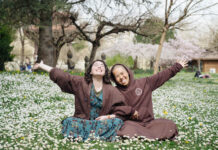
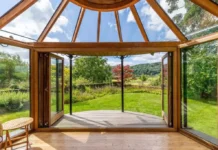


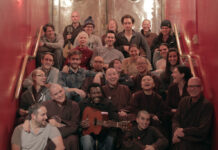
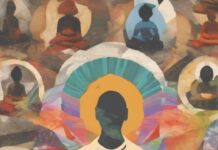
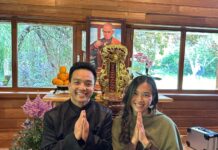
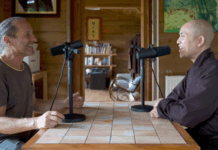
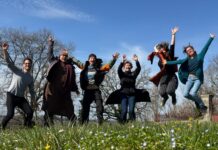
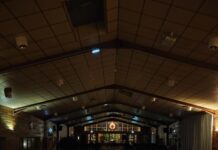
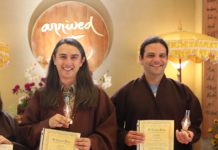
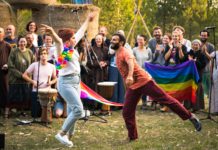
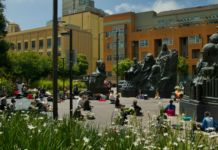

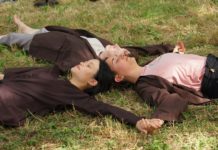


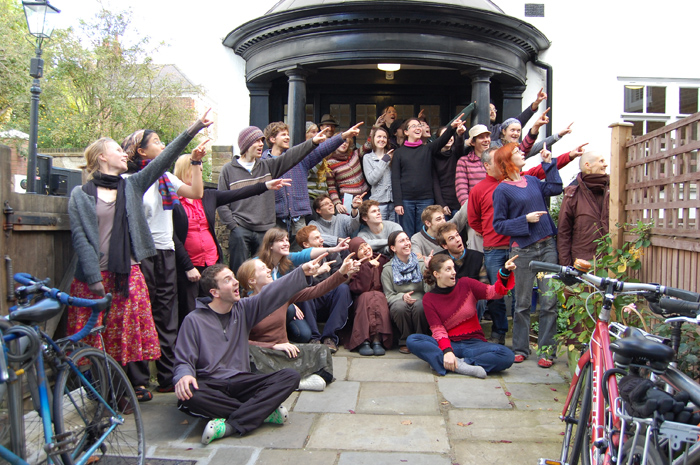
Thanks for this beautiful sharing!
Dear brother Phap Linh,
what a very beautiful explanation of the wake up movement!
It feels so good to be a part of it……
wishing you and all the brothers and sisters well from the Groningen sangha in the Netherlands
Andreas
Such a nice surprise to see this published here – I wrote it for the Vietnamese newsletter, for a mainly monastic audience!
But there was something which I forgot to add, which I have been reflecting on recently. I struck me that this whole idea of bringing together talented and kind people could come off as elitist – the main point for me is that EVERYONE has the capacity to be good, talented, kind and wise – Wake Up, or Sangha in general, just provides an ENVIRONMENT in which everyone gets to discover the goodness, the truth and the beauty that they carry as a potential in themselves.
Certainly it’s true that for me, I’m not much use on my own – my observation is that Sangha makes me a better and a happier person. Thank goodness! Mostly because with the Sangha, I am less of a individual, and more of a flowing part of something bigger and more beautiful. And I think that’s the new element we can bring to the old classical Chinese story, which otherwise could seem to be about lonely geniuses, passing like ships in the night. In fact, if we come together with the tools of the practice to hold and to heal us collectively, that is when our true brilliance, creativity and even great compassion can manifest!
Wow, what fun it is to be alive!
Thank you all for being there….
Thank you so much for your beautiful and inspiring sharing, Brother Phap Linh. I just read your sharing in Lá Thư Làng Mai. I was wondering how to share it with Wake Up Singapore. Thanks to Google, I have found this on Wake Up! It’s wonderful! Now I can share your insight with all the Wake Uppers in Singapore! Thank you so much, dear Brother. _()_